As one ventures into the heart of Australia’s Red Center, the majestic Uluru rises, a testament to the Anangu people’s profound connection with the land. Their 60,000-year-old culture is etched into every rock, cave, and sand dune, whispering stories of their ancient traditions and spiritual beliefs. The intricate patterns, vibrant colors, and symbolic motifs woven into their art forms beckon, promising to unravel the secrets of this sacred site. Yet, it’s only the beginning – a mere glimpse into the rich tapestry of Uluru’s Aboriginal art and culture, waiting to be explored, understood, and cherished.
Key Points
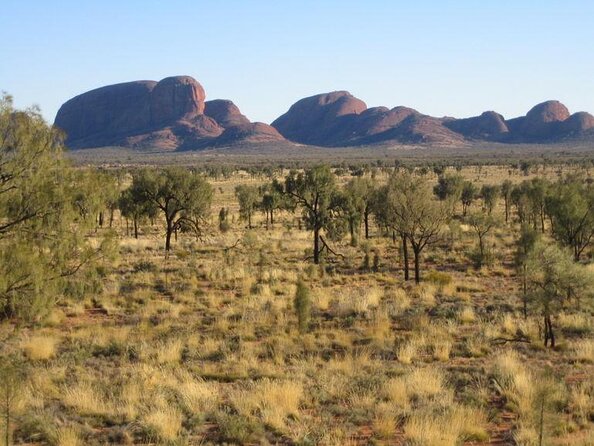
• Uluru’s Aboriginal art forms, including dot paintings, carvings, and woven baskets, visually represent the Anangu people’s ancient narratives and spiritual beliefs.
• The Anangu people’s art is a window into their soul, conveying the essence of their culture and traditional way of life.
• Uluru’s rust-hued surface holds secrets of the past, with ancient rock art and carvings whispering tales of a long-forgotten era.
• The Anangu people’s 60,000-year history is woven into the land, with Uluru being their ancestral home and a living, breathing entity.
• Traditional dot painting techniques require immense patience, skill, and cultural knowledge, with each dot conveying stories, myths, and ancestral secrets.
Uluru’s Rich Cultural Heritage
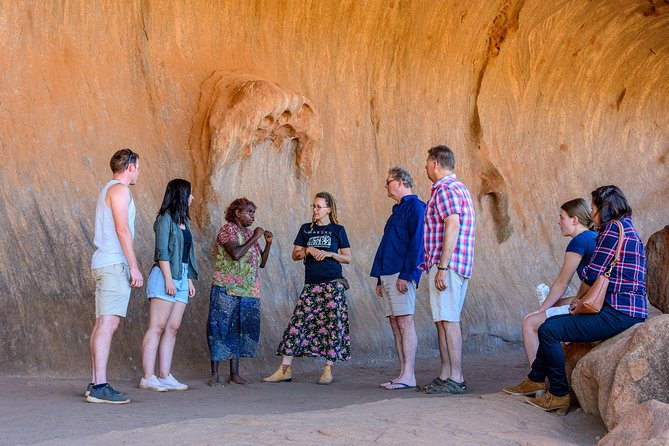
At the heart of Australia’s Red Centre lies Uluru, a majestic sandstone monolith steeped in the rich cultural heritage of the Aṉangu people, whose 60,000-year history is woven into the very fabric of this sacred site.
This ancient landscape has been home to the Aṉangu for thousands of generations, with their stories, traditions, and beliefs deeply intertwined with the land.
Uluru’s rust-red hues have witnessed countless sunrises, and its weathered surface holds secrets of the past.
As the Aṉangu people’s ancestral home, Uluru is a living, breathing entity, pulsing with the rhythms of their traditional way of life.
It’s a place where the veil between past and present is thin, where the Aṉangu people’s rich cultural heritage comes alive in every rock, every tree, and every grain of red sand.
You can also read our reviews of more tours and experiences in Uluru.
Aboriginal Art and Symbolism
As the Aangu people‘s stories and traditions are inextricably linked to the land, their art forms have evolved to visually represent these ancient narratives, with intricate dot paintings, symbolic carvings, and woven baskets that whisper secrets of their 60,000-year history.
Their art is a window into their soul, conveying the essence of their culture and spiritual beliefs.
The dot paintings, characterized by vibrant colors and geometric patterns, depict the creation stories and ancestral beings that roam the land.
Every symbol, every color, and every pattern holds a deep meaning, telling a story that’s been passed down through generations.
This rich cultural heritage is a testament to the Aangu people’s ingenuity and creativity, offering a glimpse into their profound connection with the land.
The Story of Anangu People
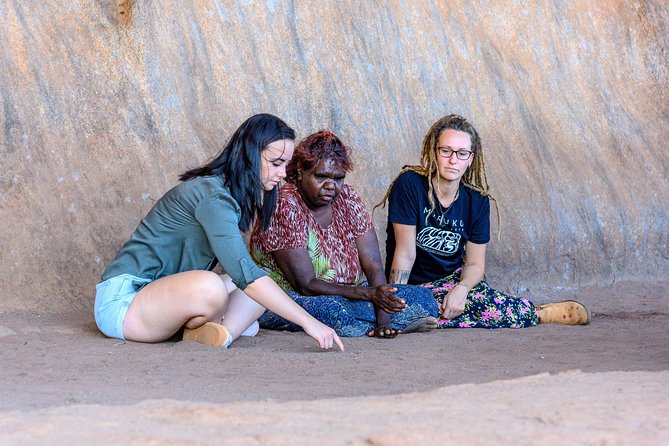
The Anangu people’s 60,000-year history is woven into the very fabric of Uluru, their ancestral homeland, where their ancient stories, traditions, and spiritual beliefs are deeply intertwined with the land’s rugged beauty. Their rich cultural heritage is a testament to their resilience and adaptability in the harsh Australian outback.
The Anangu people’s connection to Uluru is multifaceted, with the land holding significant spiritual, cultural, and historical importance.
Tjukurpa: The Anangu people’s belief system, which encompasses their laws, stories, and traditions.
Pitjantjatjara: The native language spoken by the Anangu people, which is still used today.
Ngura: The Anangu people’s concept of country, which encompasses their connection to the land and their ancestors.
Walytja: The Anangu people’s concept of family, which emphasizes the importance of kinship and community.
Traditional Dot Painting Techniques
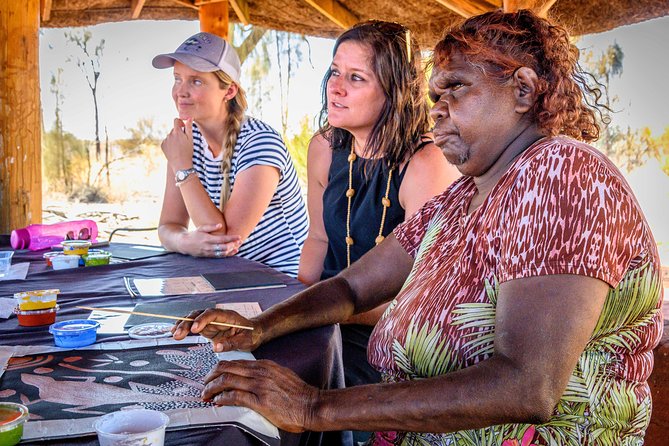
Anangu artists meticulously apply layer upon layer of tiny dots to create vibrant, intricate designs that burst with life and spiritual energy.
This traditional dot painting technique, passed down through generations, requires immense patience, skill, and cultural knowledge.
Each dot is carefully placed to convey stories, myths, and ancestral secrets, weaving a rich tapestry of Aṉangu culture.
The artists’ fingers move deftly, guided by the rhythms of their ancestors’ songs and the rustling of the desert wind.
As the dots accumulate, the artwork comes alive, pulsing with the essence of the land and its people.
In this sacred act of creation, the artists connect with their heritage, honoring the Dreamtime and the timeless stories of their forebears.
Exploring Uluru’s Sacred Sites
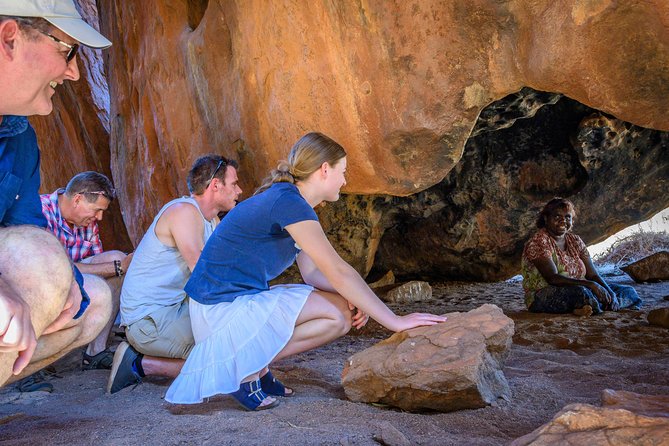
Sacred stories seep from the rust-hued monolith, as Uluru’s ancient landscapes whisper secrets to those who venture close. As visitors explore the sacred sites of Uluru, they’re immersed in the rich cultural heritage of the Anangu people. The land is alive with stories, passed down through generations, of creation ancestors and their journeys.
You’ll discover the significance of:
Kuniya Piti, a sacred waterhole and rock art site
Mutitjulu Waterhole, a tranquil oasis with ancient rock carvings
Tjukurpa, a sacred story of the ancestral beings
Uluru’s many sacred caves, holding secrets of the land’s creation
Through guided tours and cultural workshops, visitors gain a deeper understanding of Uluru’s sacred sites, and the importance of preserving this ancient culture for future generations.
Ancient Rock Art and Carvings
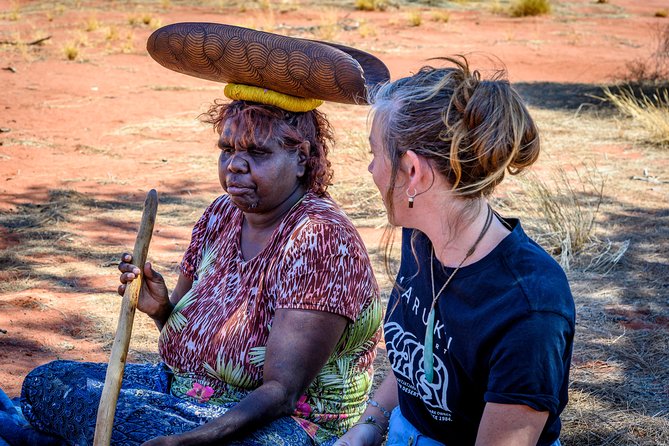
As the sun casts its golden light upon Uluru’s ancient landscapes, intricately carved rock art and mysterious symbols emerge, whispering tales of a long-forgotten era.
The ancient Anangu people etched these masterpieces onto the rock face, conveying stories of their ancestors, creation myths, and the laws that governed their lives.
Delicate stencils of hands and animals, alongside bold geometric patterns, adorn the sandstone canvas, a testament to the artistic prowess of Uluru’s earliest inhabitants.
These ancient rock art and carvings are a window into the past, offering a glimpse into the rich cultural heritage of the Anangu people, whose connection to this sacred land remains unbroken to this day.
Uluru’s Spiritual Significance
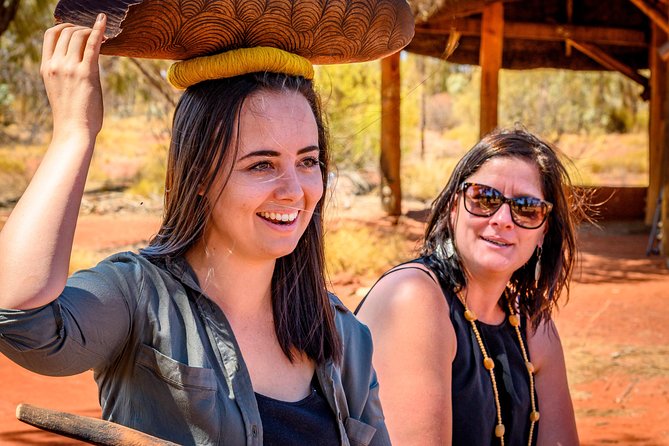
Uluru’s rust-hued monolith, a sentinel of the desert landscape, holds a profound spiritual significance for the indigenous Aṉangu people, who believe that the rock’s ancient stories and songs are woven into its very fabric.
For the Aṉangu, Uluru is a living, breathing entity that pulsates with spiritual energy. They believe that the rock’s every crack, crevice, and curve holds a deep cultural significance, telling the stories of their ancestors and the laws that govern their lives.
Uluru is said to be the physical manifestation of the Aṉangu people’s songlines, which are the ancient songs that created the world.
The rock’s stories and songs are woven into the fabric of Tjukurpa, the Aṉangu people’s law and culture.
Uluru is believed to be inhabited by ancestral beings, who are said to reside in the rock’s crevices and cracks.
Uluru is a gateway to the Dreamtime, a realm where the Aṉangu people’s ancestors and spirits reside.
Preserving Anangu Cultural Traditions
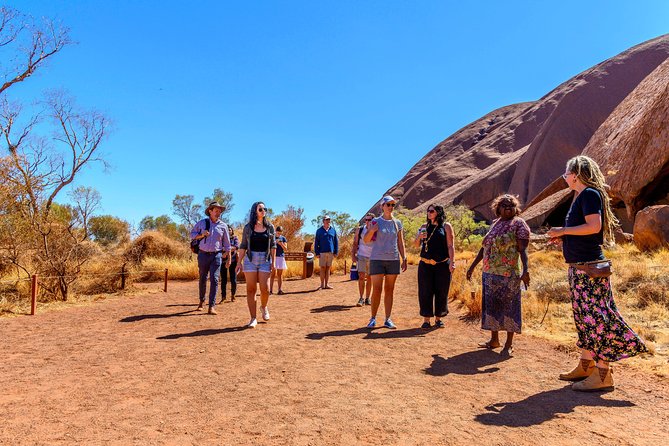
The Añangu people‘s tireless efforts to preserve their cultural traditions have led to a resurgence of interest in their ancient stories, songs, and art forms, ensuring the continuation of their 60,000-year-old heritage.
Through guided tours, workshops, and interactive experiences, visitors can gain a deeper understanding of the Añangu people’s history and traditions.
The dot painting workshop, for instance, allows participants to learn the traditional techniques and symbolism behind this unique art form.
By sharing their cultural practices, the Añangu people aren’t only preserving their heritage but also fostering cross-cultural understanding and appreciation.
This exchange enables the Añangu people to maintain their cultural autonomy while introducing the world to the richness and beauty of their traditions.
Common questions
What Is the Best Time of Year to Visit Uluru-Kata-Tjuta National Park?
She recommends visiting Uluru-Kata-Tjuta National Park during the shoulder season, from April to May or September to November, when temperatures are mild and crowds are smaller, making for a more comfortable and peaceful experience.
Can I Take Photographs During the Dot Painting Workshop?
During workshops, travelers often wonder if capturing memories is allowed; typically, photography is permitted for personal use, but it’s essential to ask the instructor or guide for permission to avoid disrupting the creative process.
Are There Any Age Restrictions for This Guided Tour?
She notes that most travelers can participate in this guided tour, and while infants must sit on laps, there are no specific age restrictions stated, making it accessible to a wide range of ages.
Can I Bring My Service Animal on the Tour?
She should contact AAT Kings directly to inquire about bringing her service animal on the tour, as they’ll need to assess its accessibility and make necessary arrangements to ensure a smooth experience for all participants.
Are There Any Refreshments Provided During the Tour?
She wonders if refreshments are provided during the tour, and the answer is no, participants should bring their own water and snacks, as none are included, allowing them to stay hydrated and energized throughout the experience.
Final Words
As the sun sets over Uluru, the sacred site‘s cultural significance shines brighter, illuminating the Anangu people‘s profound connection with the land.
Through their vibrant art forms, ancient narratives, and spiritual beliefs, the essence of their 60,000-year history is palpable.
By embracing and preserving Anangu cultural traditions, we honor the land’s rich heritage, ensuring the stories of Uluru’s sacred sites continue to inspire and educate generations to come.
More Tour Reviews in Uluru
Not for you? Here's more nearby things to do in Uluru we have reviewed
- Scenic Plane Flight: Uluru Rock Blast
- Uluru Audio Tour App
- Afternoon Kata Tjuta Small Group Tour
- Uluru Small Group Tour Including Sunset
- Scenic Plane Flight: Desert Explorer
- Segway the FULL Base of Uluru
- Helicopter Scenic: Lizard Safari
- Helicopter Scenic: Extended Uluru & Kata Tjuta
- 3-Day Uluru Kata Tjuta to Kings Canyon Safari From Ayers Rock
- Highlights of Uluru Including Sunrise and Breakfast
- Uluru (Ayers Rock) Base and Sunset Half-Day Trip With Opt Outback BBQ Dinner
- Overnight Uluru Adventure
